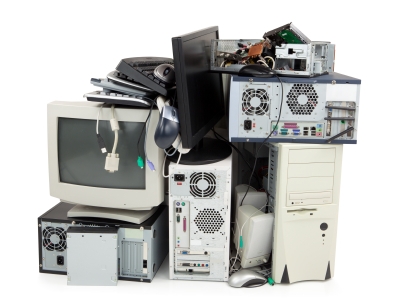Rumors
What happens when you spread the rumors that are not true? Can a rumor be created to go viral as true? What are the consequences?
The First Rumor
What happens when you spread the rumors that are not true? Can a rumor be created to go viral as true? What are the consequences?
The First Rumor

You watch the news. You read your newsfeed. You struggle with paying your monthly obligations. You are constantly applying for jobs in an economic environment that is not conducive to either switching jobs or finding a job, depending on your current job situation. You try to find the best academic, emotional, or medical support for your children.
We all have experienced one or more of the previous situations that lend to our daily stress and anxiety. How do we cope with this without causing health issues for ourselves.
A psychologist or therapist will want you to talk through your feelings, develop breathing exercises, and learn coping mechanisms. A psychiatrist will want to prescribe the latest medication that was manufactured by a large multinational pharmaceutical company. Your friends will want to invite you to watch a movie or sporting event while enjoying libations of your choice, alcoholic beverages or smoking either tobacco or marijuana (depending on the laws of your state). A fitness professional or coach will want you to develop some sort of workout routine.
What is the best option for you?
I cannot answer this question for you, but I can share my own experience, and maybe you can take something from it. The most important thing to realize is that you are not alone in your experience, your thoughts, or your struggles. There is no need to live on an island in isolation, to an eventual downward spiral.
Who am I to talk?
I am the single wage earner in a family with six kids with various special needs, including Autism. I have lived in an area with little to no support for the betterment of my children’s lives, making up for about 20 years. There is the line of a famous poem, “it is better to have loved and lost, than never to have loved before”. This is true because my family has lived in an area where we did get all of their needs met for a little over three years. Because of this short window, my wife and I know that there are better places than where we live now. This helps to keep us going but also adds to our stress and anxiety because we know that there is more, and it is potentially attainable.
What adds to the stress is that being a single wage earner, I have been either unemployed or underemployed for almost two years. I am a seasoned software developer with very marketable skills. Within the last 2 years, I have joined the ranks of tens of millions of other technical professionals saying the same thing and finding themselves without a job. I have adopted the attitude of an octopus, trying several avenues to achieve sustainable income, while balancing helping to take care of my children that need a lot of hands-on intervention.
The key to managing stress is to keep moving forward even if it is in baby steps. Also, you need an outlet of some sort. For me, that outlet varies between working on my own software projects, blog writing (as I am doing now), watching a series, or vegging out to TikTok videos. The important piece to any of these options is to not spend too much time doing one thing, and not to get distracted from the tasks that need to get completed.
Years ago, one of my friends, who at the time was into motivational philosophy, told me to put a sign on my door to the outside that says, “Are you going to do something that will help you achieve your dreams”. This is the reason for not spending too much time on your outlets of choice. Outlets are great and very important but can also serve as a crutch if you utilize them too much.
What about drugs?
No, I am not referring illegal substances or addictive substances like alcohol, tobacco, or marijuana. I am referring to clinically prescribed antidepressants or antianxiety medications. In my opinion, there may be a place for these medications, but they may be overly prescribed as an easy short-term solution that could have unwanted side effects in the long term. My oldest son, who was diagnosed with anxiety with Autism was prescribed Sertraline on multiple occasions. Both instances resulted in the first month being a dream and then ended in his symptoms getting worse. When you read about the potential side effects of these serotonin uptake inhibitors, you find out that these popular antianxiety medications have anxiety, emotional outbursts, and sleeplessness as potential side effects.
For some situations, I am a supporter of nutritional supplements, with the understanding that supplements are like prescribed medications without prescription or oversight. Supplements are viewed as food and as long as manufacturers follow the guidelines for safe food, they are deemed okay for consumption. Taking supplements also requires more homework on your behalf. Reading studies and personal accounts are important, and when possible, talk to people you can trust. Cannabis, without THC, is known to be safe and very helpful for anxiety. Another supplement, known as 5-HTP, is also known to help with stress, anxiety, and relaxation. I have taken both and have found that 5-HTP works great for the type of stress and anxiety I am writing about in this article. This may not come too much of a surprise because one of the key ingredients is tryptophan. Tryptophan is a substance also found in turkey and is the cause of why people feel very relaxed after eating Thanksgiving dinner. I personally have discovered, that based on recommended doses, taking 5-HTP twice a day allows me to cope with my stress and anxiety and not only allows me to focus on the tasks that matter, but allows me to relax when I take a break to enjoy one of my outlets. Another interesting side effect is that my sleep, which may not meet the recommended number of hours, is more restful. I average about five hours of sleep per night, which in all honesty, is really not enough, but since taking 5-HTP, those five hours feel like seven. Both supplements may not work for those who suffer from clinical general anxiety. When you take supplements, you must remember to take recommended doses. Just like prescribed medication, it is possible to take too much and potentially overdose.
Another avenue of managing stress and anxiety is consoling with your peers. Now, traditionally, this would equate to peer support groups, and you are at the mercy of your geographical location as to what support groups are available. In the age of social media, this boundary no longer exists.
Here are some social media outlets that I have found useful, I linked my profile to each one so that you can follow me and see what I post or repost on each platform:
LinkedIn: professionally, this is the leader bar none. You can connect to previous co-workers, future co-workers, previous and future employers, and anyone who just shares your interests or in the same field as you. LinkedIn is also a fantastic publishing platform where you can read articles related to your industry written by either the leaders of the industry, like Bill Gates, as well as the people who are actually doing the work every day, like you and me.
Reddit: Nothing in technology is truly new. Reddit is a modern implementation of the forums of 20 plus years ago. Who remembers the infamous and famous Yahoo forums? In Reddit, you can find a forum (or sub-Reddit) on pretty much anything. What makes Reddit special is the contributors. I find that Reddit contributors write with thought, making the platform more valuable personally. Even topics that seem rather silly, have posts that seemed to have taken some level of effort by its authors. Such is the case of one particular post where the author described a fart of his in the stairway of his workplace that grabbed the attention of one of the executives of his company who thought there was an air conditioner leak or dead animal. The account was so visually written, I felt like I could smell it while reading the post. On the flip side, I joined an Autism support group that was more helpful than in person support groups that I participated in over the years.
TikTok (and Instagram): TikTok and Instagram are platforms that I refer to as healthy distractions that can easily lead to unhealthy distractions without proper self-control. People quite literally can post anything. You can find posts of interest that can truly give your brain a nice break or a visual thoughtful account of someone’s life, much like an in-person support group that just happens to consist of potentially thousands or millions of people. I personally use TikTok, while my wife uses Instagram. Our usage is fairly similar with the exception that I have not posted on TikTok as much as she has posted on Instagram. Being an artist, she uses Instagram to showcase her art pieces, which is a common usage of the platform.
It is important to remember that even though we all have stress and anxiety in our lives and some of us have more or different sources of stress than others, we are not alone. The key thing to managing stress is to find the coping mechanisms that work best for us, whether it is support groups, healthy outlets, social media, nutritional supplements, professional advice, or a combination of one or many of these options. Even though there is no correct answer because we are all different and will therefore manage stress differently. there is an answer for each of us. We just need to keep moving forward and always remember that we are not alone.
Thank you for reading and I hope that what I have written can help you in some way.

Commoditization refers to the process of transforming a product or service into a commodity, where it becomes standardized and interchangeable with other similar offerings in the market. This phenomenon has a long history, with products evolving from unique and specialized to mass-produced and standardized to cater to the needs of a growing consumer base. In this article, we will explore the advantages and disadvantages of commoditization, as well as its historical context. Additionally, we will delve into non-physical products or services that have successfully undergone the process of commoditization.
Advantages
Lower prices and increased affordability: When a product or service becomes commoditized, the increased competition in the market drives down prices. Standardization enables economies of scale, reducing production costs and making the commodity more affordable for a larger consumer base. This affordability factor allows greater access to essential goods and services that were previously only available to a limited group of consumers.
Greater choice and availability: Commoditization creates a standardized market where multiple suppliers offer similar products or services. This increased competition leads to a wider range of options for consumers, ensuring that they can select a commodity that best suits their needs and preferences. Moreover, the enhanced availability of commoditized products ensures that consumers have access to these goods whenever they require them.
Facilitates technological advancements: Commoditization often prompts technological advancements as companies strive to differentiate themselves from their competitors. For instance, advancements in manufacturing processes and technologies have made it possible to produce commodities more efficiently, ensuring higher quality and lower costs. As a result, consumers benefit from improved products and services that incorporate the latest technological innovations.
Stimulates market innovation: The commoditization of a product or service frees up resources and allows companies to focus on enhancing other aspects, such as customer service, marketing, or distribution. This stimulates market innovation, as companies seek to differentiate themselves by providing improved customer experiences or finding new ways to add value to their commoditized offerings.
Disadvantages
Loss of uniqueness and differentiation: As products or services become commoditized, their unique selling propositions diminish. Standardized commodities often lack distinct characteristics that set them apart from their competitors. This homogeneity can result in a loss of brand identity and consumer loyalty, as consumers may perceive no significant differences between offerings and may switch to cheaper alternatives readily available in the market.
Price-driven focus: Commoditization tends to narrow down the consumer perspective to price as the primary decision-making factor. With multiple suppliers offering similar products, consumers are more inclined to compare prices rather than consider other aspects, such as quality or additional features. This focus on price can lead to a race to the bottom, where suppliers cut costs to reduce prices, potentially compromising the overall quality of the commodity.
Inhibits creativity and innovation: In a commoditized market, the emphasis is often on cost efficiency and standardization rather than on creativity and innovation. Manufacturers and service providers prioritize replicating existing successful products or services rather than investing resources in exploring new ideas. This lack of innovation can hinder the development of breakthrough products or services that provide exceptional value to consumers.
Loss of control for producers: When a product or service becomes commoditized, producers may lose control over pricing and market dynamics. As the market becomes saturated with similar offerings from various producers, the pricing power often shifts to the consumer. Producers may find it challenging to differentiate themselves or maintain healthy profit margins, making it difficult to sustain their business in the long run.
Historical Evolution of Commoditization
The concept of commoditization is not new and has been prevalent in various industries throughout history. One of the earliest examples is the commoditization of salt, a vital commodity for human survival. In ancient times, salt was scarce and highly valuable. However, advancements in salt production techniques and the establishment of trade routes facilitated its mass production and distribution. Ultimately, salt became an affordable and widely available commodity, losing its previous aura of exclusivity.
Another significant historical example is the commoditization of sugar. Sugar was initially considered a luxury item and was only affordable for the wealthy. However, as technology advanced and methods for extracting sugar from sugar cane or beets improved, sugar became more accessible and affordable to the masses. Today, sugar is a ubiquitous commodity found in almost every household.
Commoditization of Non-Physical Products and Services
While commoditization is primarily associated with physical products, non-physical products and services have also undergone this transformative process.
Software solutions: The software industry has witnessed the commoditization of various applications and programs. Software solutions that were once custom-built for specific needs have now been standardized and made available as off-the-shelf products. This commoditization has enabled easier access to software tools, reducing costs, and allowing even small businesses or individuals to benefit from advanced software capabilities.
Telecommunications services: The telecommunications industry has experienced commoditization with the advent of mobile phones and the Internet. Telecommunications services such as voice calls, messaging, and data have become standardized and are offered by numerous providers. This has led to increased competition, lower prices, and greater availability for consumers.
Online streaming services: The rise of online streaming platforms such as Netflix, Amazon Prime Video, and Spotify has commoditized entertainment and music consumption. These platforms offer a vast array of movies, TV shows, and music that can be accessed by subscribers for a monthly fee. The success of these services has led to the commoditization of digital content, making it widely accessible to consumers.
Wrapping up
Commoditization has both advantages and disadvantages for consumers and producers alike. While it provides lower prices, greater choice, and improved accessibility to essential products and services, it also leads to loss of uniqueness, price-driven focus, and potential lack of innovation. Understanding the historical context of commoditization and its impact on both physical and non-physical products can help individuals and businesses navigate the changing dynamics of the market.

Esports has become a global phenomenon, captivating millions of viewers and participants around the world. As the competitive gaming industry continues to boom, the demand for high-quality Esports technology has surged. In this article, we will explore the latest and top-rated brands in Esports technology, focusing on gamer gloves, headsets, mice, keyboards, glasses, team jerseys, and fanware. We will cover their compatibility with game systems, mobile phones, and desktop computers, along with the innovations they bring to enhance the gaming experience. Continue Reading

Low-code development platforms have gained immense popularity in recent years, transforming the way applications are built and empowering businesses of all sizes to create software quickly and efficiently. In this article, we will delve into the world of low-code development, with a specific focus on three leading platforms: Oracle APEX, Microsoft PowerApps, and Bubble.io. Through an unbiased examination of each platform’s capabilities, strengths, weaknesses, and the broader pros and cons of low-code development, readers will gain a comprehensive understanding of the low-code landscape.
Oracle APEX, also known as Oracle Application Express, is a robust low-code platform that targets professional developers familiar with Oracle technologies. It offers a wide range of features, including an intuitive drag-and-drop page designer, declarative application development, and seamless integration with Oracle Database. According to surveys conducted by Oracle, APEX has proven highly successful among enterprise users, with 360,000+ developers and 25,000+ customers worldwide (source: Oracle APEX Usage Statistics).
Advantages
Disadvantages
Microsoft PowerApps is a popular low-code development platform that seamlessly integrates with other Microsoft products and services, such as SharePoint and Office 365. According to Microsoft, PowerApps has seen a significant adoption rate, with over 2.7 million developers and 36 million app launches in the past year (source: Microsoft PowerApps Usage Statistics).
Advantages
Disadvantages
Bubble.io is a visually-driven low-code development platform that prioritizes simplicity and ease of use. It appeals to users with little to no coding experience, allowing them to build web applications through an intuitive drag-and-drop interface. Bubble.io boasts a growing user base, with over 500,000 users across 195 countries (source: Bubble.io Usage Statistics).
Advantages
Disadvantages
We learned about the three dominant low code platforms, but what about the advantages and disadvantages of developing using low code? Why should we, as business leaders and enterprise architects, commit to this form of application development?
Advantages
Disadvantages
Wrapping Up
Low-code development platforms offer businesses a variety of benefits, such as accelerated application development, increased productivity, and cost savings. Oracle APEX, Microsoft PowerApps, and Bubble.io are all formidable options in the low-code market, each catering to specific needs and user requirements. By understanding the pros and cons of these platforms, organizations can make informed decisions suitable for their specific projects.
While Oracle APEX offers a powerful solution with seamless Oracle Database integration, Microsoft PowerApps provides a comprehensive ecosystem for Microsoft users, and Bubble.io excels in simplicity and accessibility. Ultimately, the choice of a low-code platform depends on the organization’s unique needs, level of technical expertise, and project requirements.

It was the year 2016. You are taking a nice brisk stroll through your favorite park. You are listening to the birds sing and watching the squirrels run back and forth from tree to tree. Your eyes are diverted to a group of teens running to various places in the park holding their phones as if they were Tricorders and they were performing a Star Trek enactment.
“I’ve got one!”
“I found one here!”
“Darn, Zubat! Come back here!”
You have read about the phenomenon. No, I am not referring to Sudden Teenage Insanity Syndrome (STIS). If that was a thing, it would be classified as a pandemic. It is common knowledge that during the years from ages 13 to 20, people go a little crazy. We chalk it up to the “the teenage years”. But I am not referring to the teenage years, I am referring to the release and popularity of Pokémon Go. Pokémon Go was one of the first augmented reality (AR) games for a mobile device. It overlays imaginary Pokémon on top of the real world, with the purpose of “catching them all”.
Even though Pokémon Go is not technically an Esports platform, it is an MMORPG-based competition, the first step towards the Esports world colliding with the augmented reality world.

Popular industries change, and universities and post-secondary schools need to change with what is trending. Now, I am not saying that universities need to follow fads, but they need to realize that graduates may be entering industries that may not even have existed twenty to thirty years ago.
Over twenty years ago, business students chose between finance, marketing, general management, human resources, and information systems as their concentrations. This is not the case now. Universities have added the concentrations of healthcare administration, entrepreneurship, supply chain management, and business analytics to fit the need of more focused concentrations.
The Opportunity
One growing business concentration is Esports Management. Esports, at the time of writing this article, is a 1.5-billion-dollar industry. Universities can be both small and large corporations, but what makes all corporations the same is the goal of making money. Universities make money through business incubators, athletics, inventions, publishing, and, of course, providing education. Colleges of all sizes can increase their bottom line indirectly and directly by managing Esports events, sponsoring Esports events and teams, and providing training to students whose goal is to graduate and manage Esports events and teams, whether they work for Esports organizations or organizations that sponsor Esports.

You remember it as it was yesterday. Waiting in your house or office for that FedEx or UPS delivery. You can still smell that crisp clean box with the iconic Dell symbol on the front.
That was five years ago. What served you well with 4 GB or 8 GB of RAM and 128 GB hard drive just doesn’t cut it anymore for you. That last Windows update made you feel you had one of those computers you vaguely remember from the time that 2 digit years were still being written. Who would believe you would need to write a four digit year to prevent confusion between centuries?
Now you have a computer that sounds like a plane taking off when you are browsing https://google.com. When you open a cloud-based productivity tool like Google Docs or Office 365, you feel like you could go and enjoy a nice home cooked meal in the time it takes the browser to finish loading the application and is ready for typing.
Back in the 1990’s (not 1890’s or even 2090’s), computers were designed with the idea upgrading. When I refer to upgrade, I do not mean, toss the old computer in the trash or recycle bin and buy a new one. Small computer repair stores existed to upgrade the parts or inner workings of the computer to essentially provide you with a new computer. Computer repair technicians, depending on skill and knowledge, could actually replace everything from memory to processor chip to even the motherboard. Retail outlets, like Fry’s Electronics and Radio Shack, existed for the benefit of the professional and hobbyist. I, myself, was one of these hobbyists. Unfortunately, lacked the skill and knowledge, and produced, as a result, the equivalence of Frankenstein’s monster before the lightning strike that brought it to life.
Now, over 20 years later, computers are designed to dispose and replace. The parts that make up computers can be proprietary and the inner workings of computers may be impossible to replace and upgrade. What happens to these computers that no longer can be upgraded? They are disposed of in landfills, causing a tremendous negative impact on the environment.
To get back to this five year old laptop you have, what do you do? The simple answer is a term that I coined as chromatize.
What is chromatizing?
Chrom-a-tize: To convert an desktop or laptop personal computer into a Google Chromebook, using the operating system, Chrome OS Flex.
How did I come to discover this interesting way of breathing new life into an personal computer? This has been my multiyear journey of about 18 years in search of a Linux desktop distribution that was easy to work with, lightweight, low cost, and did not feel like I was settling by not using either Microsoft Windows or Mac OSX. I felt like I was Captain Ahab in search for his White Whale.
Most Linux distributions failed at least one of my criteria: I just felt like I was settling and I had to modify my personal process and software choices too much to warrant not being on either a Mac or Windows computer.
Enter Ubuntu
For anyone who truly wants to get into Linux, and wants the backing of a major company, such as Microsoft and Apple, then Ubuntu is the optimal choice. Ubuntu, produced by Canonical, is the distribution that companies use the most. I actually was an avid user of Ubuntu desktop edition for many years. Why did I switch back to Windows or Mac? Simply put, it failed the one criteria of feeling like I’m just settling. I was making too many changes to my work process and was not compatible with my team members at work, who used mostly Mac computers, and some Windows based computers. The other issue with Ubuntu is that it is definitely not lightweight. I tried running it on an older desktop computer and received less than desirable results. I felt like I was on a i386 machine running Windows 10.
Enter The Chromebook – the computer we’ve been waiting for since the 1996.
It was the late 1990’s. The Internet was in its infancy, mobile phones were phones that were hardwired inside your car with an antenna on the roof, and Larry Ellison, founder and CEO of Oracle, spoke religiously about the Network Computer.
“Ellison said the use of network computers, where applications and information are stored on network servers instead of on a PC, would save corporations huge amounts of time and money.
He said current corporate networks based on client-server computing are too costly and inefficient.”
Ellison was effectively predicting cloud computing and the usage of tablets, mobile phones, and the Google Chromebook, at least five years before the first iPad was announced by Apple and the advancement for what we refer to today as Cloud Computing. The Google Chromebook was not invented until 2011.
Like all new inventions, the Chromebook was not very practical at first. Over the years since 2011, with more enhancements to Chrome OS and the shift to cloud technology trends like software as a service applications (SaaS), the Chromebook has become a staple item for the mobile workforce and students in the classroom.
The Promise Continues
With the advent of Chrome OS Flex, individuals and companies now have a formidable solution to their outmoded laptop and desktop computers. Traditional ways of disposing of computers, by either landfills or recycling, can have a negative impact on our environment. Chromatizing these older computers and finding new use is the most logical step to fix this tremendous problem.
In my opinion, Google Chrome OS Flex is the best solution thus far to properly Chromatize an older computer and therefore converting it to a Network Computer or Appliance. Will it always be the best? What happens if individuals do want to tied to the Google cloud infrastructure? One thing that I know is that technology does not exist in a vacuum. More operating systems like Chrome OS Flex will surely be developed that will allow people to choose the cloud infrastructure that they want to be connected to, or no cloud infrastructure at all, as in the case of distributed computing. But, alas, that is a discussion for another day.
For now, we can all do our best and promote a greener environment and lifestyle by not just disposing our old outmoded computers. Let’s Chromatize them.

This is a question that thousands of individuals, like myself, are answering these days. How should one really answer this question?
What you want to say: “I’m desperate and you responded to my application with a request for an interview. I really don’t care if you are in the widget business or the swidget business.”
What should you say: “My ultimate objective is to rise to a leadership position in <Enter field>, and I know having the opportunity to grow my experience and improve upon my skills will help bring me closer to achieving that goal.” (from Indeed.com)
Applying for new positions can be a chore. It does not just consist of completing mundane applications and constantly updating your resume to fit the position that you are currently applying for and such a perfect fit for. You are constantly facing a new existential crisis when the stranger across the desk or on the other side of a video call poses the question to you, “Why are you here?”
Why, indeed? No, not Indeed.com — that’s just the website where you found this new object of your affection: that potential new job.
When companies want to hire their new associate, they want people to fit into their organization. We, as employees and job seekers, take this fact as natural and just “go with it”. We format and re-format our resumes, tailor that cover letter “just right”, and answer questions to how we think they should be answered. Why can’t we just be ourselves?
Perhaps an answer to this question should be called the corporate paradox. On one end, companies say they want to hire people who think for themselves and practice individualism while being a good “team player” and do whatever is best for the team, In studying management, we learned about the enemy of productivity is a concept called group think. Group think is “the practice of thinking or making decisions as a group in a way that discourages creativity or individual responsibility”.
Sounds messed up, right? Companies want productive individuals to just go with the flow and do whatever the manager decides for the group. Definitely a corporate paradox.
How does the corporate paradox relate back to the question of why you want to work for the company interviewing you? You cannot answer this question completely as yourself. You need to either re-invent yourself to answer that question, or answer the question in a way that would make a sociopathic person feel proud. The hiring manager does not want to hear truthfully why you want to work for him. He or she wants you to stroke their ego and tell them that you want to work for them to make them look better by helping to increase profits or look like a miracle worker by completing all projects early and under budget.
Capitalism. You need money, and the company needs to hire people to make them more money.
As you seek new employment and go on countless number of interviews, let’s go against the corporate paradox. When the hiring manager asks, “why do you want to work here?”, let us answer with the truth: “I need money. You need me to get the job done so you look good to your boss that we are coming in early and under budget. Everyone is happy. So, do I get the job?”

What does it mean to be uploaded? What is it like to live in the Grid? I hope Dr. Harper can help me understand, and more importantly, come to terms. When I made the appointment with Dr. Harper, the receptionist said that I could meet with him as many times that I needed to. He does come very well recommended.
As I am sitting here in Dr. Harper’s waiting room, I feel a bundle of emotions, ranging from anxious to upset to sad. Anxious over the unknown. Upset over the idea of being forced to be uploaded. Sad about leaving the physical world.
My best friend, Susan, was just uploaded last week. She was even more scared over the unknown. We have been chatting every night over a video call. It seems rather pleasant and no different than the physical world. Susan mentioned that she can “eat” anything she wants to without getting sick or gaining weight. I do love chocolate and brownies. To be able to eat an endless supply of brownies without increasing my pants size would be nice.
What is like to touch someone in the Grid? Does it feel like a real touch? Do you still feel good when you give and receive a “hug”?
So many questions.
What about death? Do people die in the Grid? If you get hit by a virtual bus or fall out of a window from a virtual building, do you get hurt?
The receptionist calls my name. She repeats my name a few times. I think I spaced out a bit. I raise my hand and call out, “I’m here!”. I stand up and approach the ominous white door that leads to Dr. Harper’s office. As I walk towards the door, I start out walking slowly, dragging my feet. With positive and negative thoughts swirling in my head, another thought comes to mind. Perhaps virtual life is the same as physical life: full of unknowns, but ready to fill life’s cup full of experiences.
As the door is opened. I walk through the doorway slowly.
“I’m here, Dr. Harper. Can we chat?”